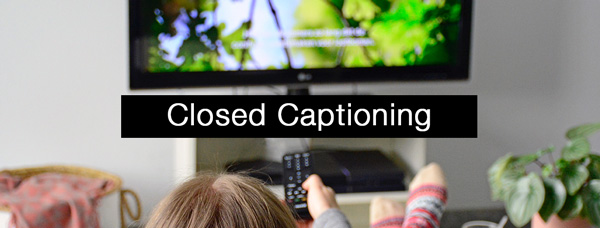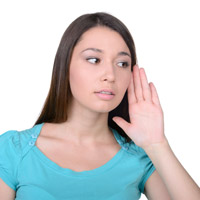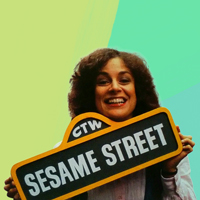
Closed Captioning
Today, captioning is an easy option to turn on for most movies and television shows. A remote control makes captions appear with a push of a button, and presto, you are able to see the printed text of the dialog on a television show. In fact, televisions in public places, like airports and bars, generally are set to display captioning by default. But for most of television history, access to captioned programming was nonexistent, or limited and required special equipment.
Subtitles is a term used in the United States and Canada for a transcription of a translation when the audio and any on-screen text is in a language the viewer does not understand. Most other countries do not distinguish between subtitles and captions and use one of those terms to encompass the meaning of both.
Consider This
Television programming began July 1, 1941, when the game show Truth or Consequences was broadcast. The first captioned program wasn't aired until over thirty years later, on February 15, 1972, with an episode of The Mod Squad. Deaf people had no access to such cultural touchstones as I Love Lucy, Gunsmoke, Leave It to Beaver, The Guiding Light, Captain Kangaroo, The Dick Van Dyke Show, Rocky and Bullwinkle, or Star Trek.
PBS and ABC Take the Lead
PBS ran some programs with open captions, including The French Chef, beginning in 1972. ABC News would re-run its evening news with open captions... five hours later, on PBS.
For years, this was the most up-to-date news for deaf and hard-of-hearing viewers.
Closed Captions Arrive in the '80s
However, designers and engineers were working on technology that would broadcast captions that would be decoded and made visible for those with a decoder box. On March 16, 1980, the first closed captioned television programs were broadcast: The ABC Sunday Night Movie Semi-Tough (ABC), The Wonderful World of Disney’s feature of the film Son of Flubber (NBC), and Masterpiece Theatre (PBS). To view the captions, viewers had to order the first generation of the closed caption decoder from Sears for $560, which would be equivalent to $1,600 today! It would be two more years before real-time captioning would be available for live events like news, sports events or specials.
A Personal Reflection
Jamie Berke, a deaf writer who was the "Deafness Guide" for About.com for 15 years, wrote in one of her articles:
— Deaf Writer and Activist, Jamie Berke
Legal Steps Forward in the '90s
In 1990, a law was passed mandating that all televisions 13 inches or larger manufactured for sale in the U.S. contain caption decoders, which meant people did not need to buy expensive decoder boxes any longer. As a result of the Telecommunications Act of 1996, the FCC established rules and schedules related to closed captioning that went into effect on January 1, 1998, and established an eight-year transition period for new programming, mandating 100% of non-exempt new programs must be captioned.
Today
100% of all new video programming, with exceptions, must be closed captioned on televisions. Finally, deaf and hard of hearing people may now click through 234 channels and not find anything good on television, just like everyone else!
Captions, however, benefit more than just the deaf — second language viewers, elderly with hearing issues, children learning to read, and really anyone watching a movie or show with audio that may be unclear at times (like characters speaking quickly or excitedly or with an accent) or when watching in a loud environment. As an article in Time Magazine aptly described, “Deaf advocates won the battle for closed captioning and changed the way Americans watch TV." Everyone wins with closed captioning.
See It Signed - Example Sentence
See this example sentence about closed captions:
ASL Gloss: OUR #TV #CC (captions) ALWAYS #ON.
English Example: The closed captions on our TV are always on.
Become a Member of Signing Savvy to see more example sentences signed, including example sentences related to Deaf Culture.
Resources
Adapted from: Cartwright, B. & Bahleda, S. (2015). Did You Know? Closed Captioning. In Lessons and Activities in American Sign Language (p. 73). RID Press.
- Allen, Scott. (2015, March 15). A Brief History of Closed Captioning. Mental Floss. http://www.mentalfloss.com/blogs/archives/33518#ixzz1ktcG3cwy
- Bellis, Mary. (2020, December 31). When Was the First TV Invented? A Historical Timeline of the Evolution of the Television (1831-1996). Thought.Co. https://www.thoughtco.com/the-invention-of-television-1992531
- Berke, Jamie. TV Without Closed Captioning. About.com. (No longer available. Used to be at: http://deafness.about.com/cs/captionarticles/a/tvwithoutcc.htm)
- First Day of (USA Commercial) TV. (n.d.). Television History - The First 75 Years. TV History. http://www.tvhistory.tv/First%20Day%20of%20TV.htm
- National Captioning Institute. (n.d.). History of Closed Captioning. https://www.ncicap.org/history-of-cc
- Timeline of Closed Captioning Development. (2009, November 3). Fookem and Bug. http://fookembug.wordpress.com/2009/11/03/timeline-of-closed-captioning-development/
- Waxman, Olivia B. (2020, March 16). How Deaf Advocates Won the Battle for Closed Captioning and Changed the Way Americans Watch TV. Time Magazine. https://time.com/5797491/closed-captioning-captions-history/
ADVERTISEMENTS
 Brenda Cartwright is a Coda, seasoned interpreter, a master teacher, well known presenter, and author of several best selling sign language and interpreting textbooks from the RID Press. For 35 years Brenda was the Chair of the Sign Language Interpreter Program at Lansing Community College in Lansing, Michigan.
Brenda Cartwright is a Coda, seasoned interpreter, a master teacher, well known presenter, and author of several best selling sign language and interpreting textbooks from the RID Press. For 35 years Brenda was the Chair of the Sign Language Interpreter Program at Lansing Community College in Lansing, Michigan. Incidental Information You Don't Get when You're Deaf
Incidental Information You Don't Get when You're Deaf Living Loud: Linda Bove - Actress and Activist
Living Loud: Linda Bove - Actress and Activist Do all deaf people benefit from hearing aids?
Do all deaf people benefit from hearing aids?







